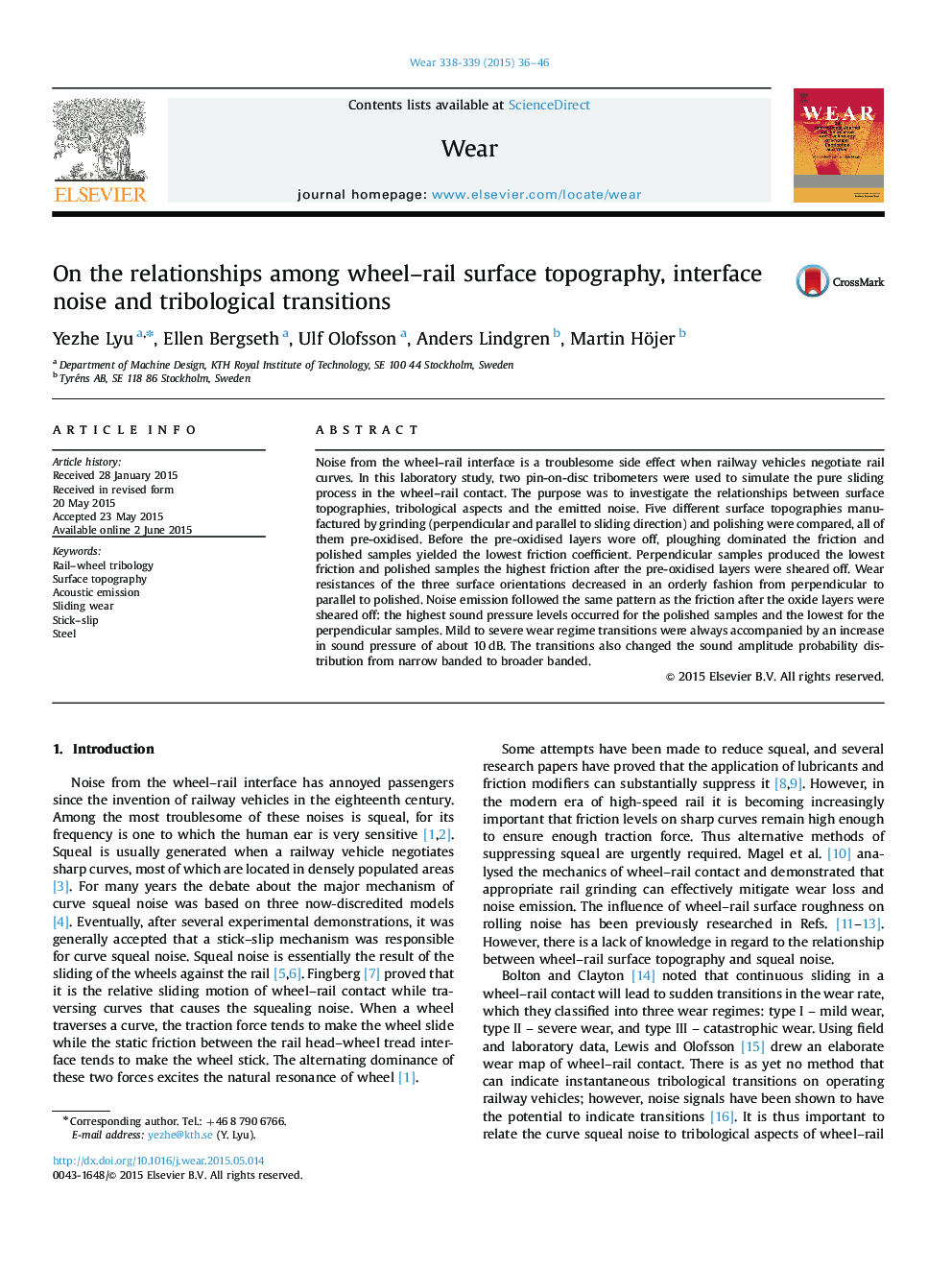| Article ID | Journal | Published Year | Pages | File Type |
|---|---|---|---|---|
| 7004147 | Wear | 2015 | 11 Pages |
Abstract
Noise from the wheel-rail interface is a troublesome side effect when railway vehicles negotiate rail curves. In this laboratory study, two pin-on-disc tribometers were used to simulate the pure sliding process in the wheel-rail contact. The purpose was to investigate the relationships between surface topographies, tribological aspects and the emitted noise. Five different surface topographies manufactured by grinding (perpendicular and parallel to sliding direction) and polishing were compared, all of them pre-oxidised. Before the pre-oxidised layers wore off, ploughing dominated the friction and polished samples yielded the lowest friction coefficient. Perpendicular samples produced the lowest friction and polished samples the highest friction after the pre-oxidised layers were sheared off. Wear resistances of the three surface orientations decreased in an orderly fashion from perpendicular to parallel to polished. Noise emission followed the same pattern as the friction after the oxide layers were sheared off: the highest sound pressure levels occurred for the polished samples and the lowest for the perpendicular samples. Mild to severe wear regime transitions were always accompanied by an increase in sound pressure of about 10Â dB. The transitions also changed the sound amplitude probability distribution from narrow banded to broader banded.
Related Topics
Physical Sciences and Engineering
Chemical Engineering
Colloid and Surface Chemistry
Authors
Yezhe Lyu, Ellen Bergseth, Ulf Olofsson, Anders Lindgren, Martin Höjer,
